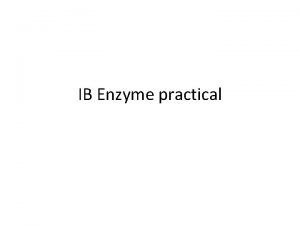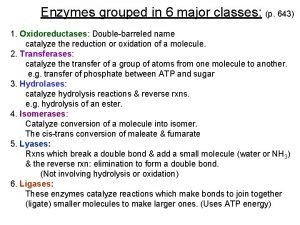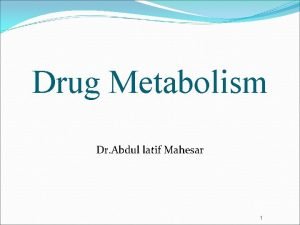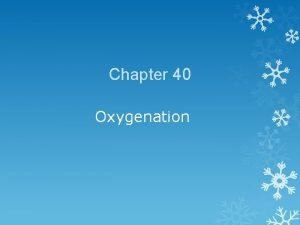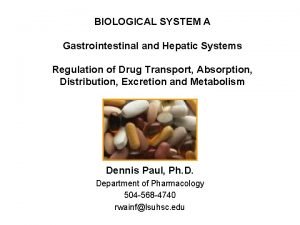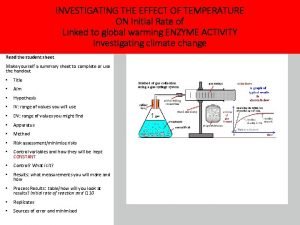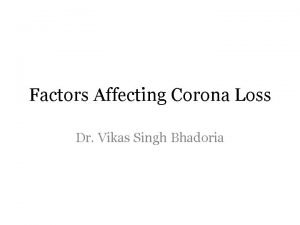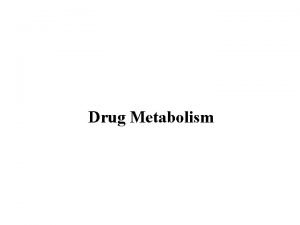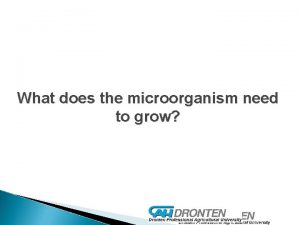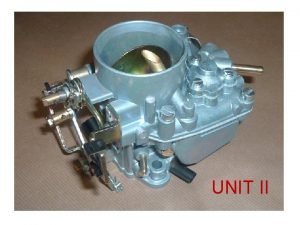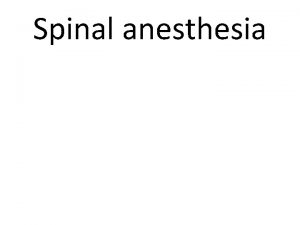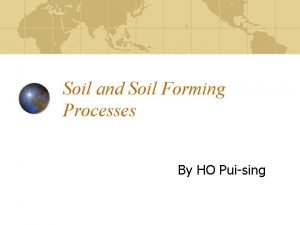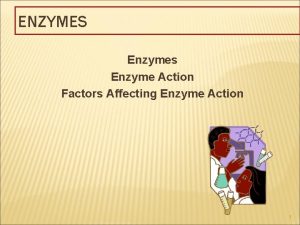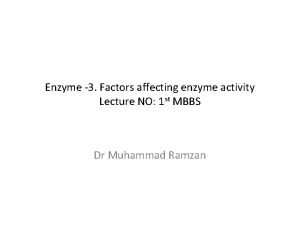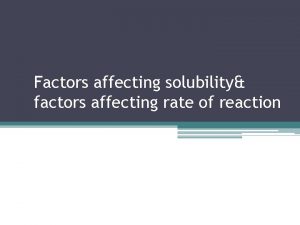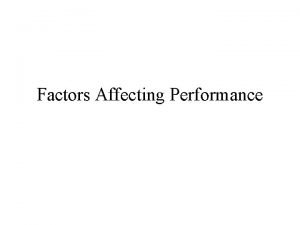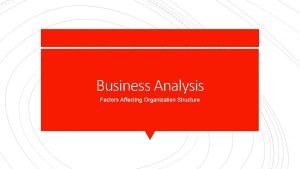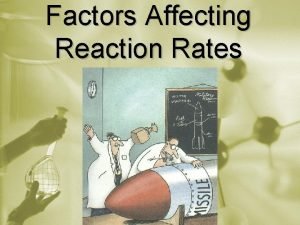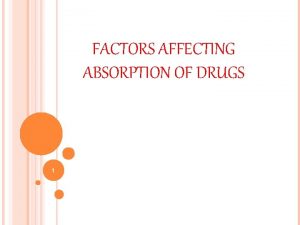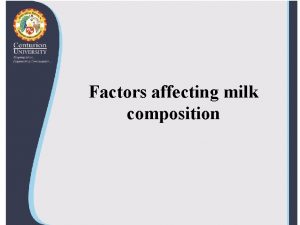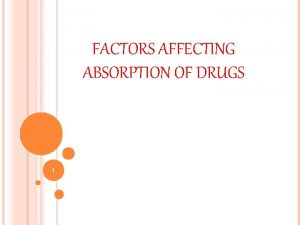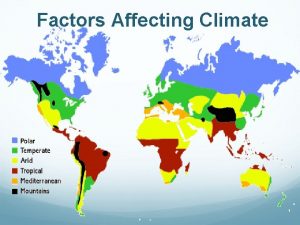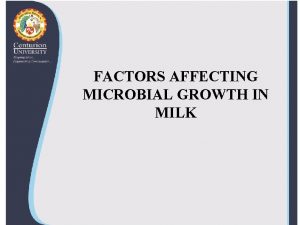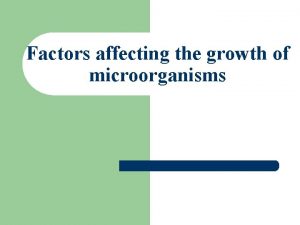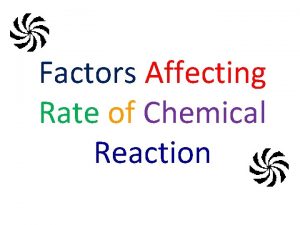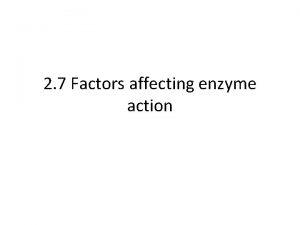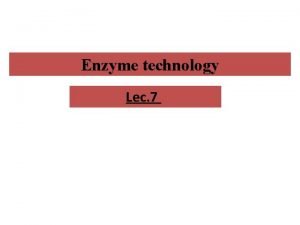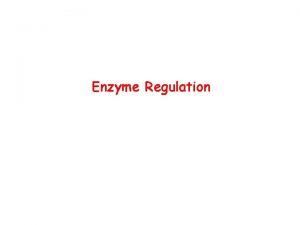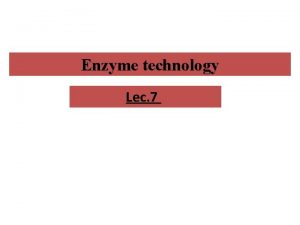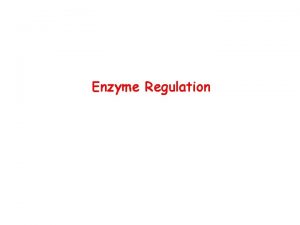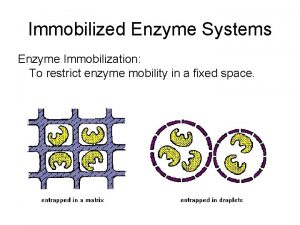Factor affecting enzyme action FACTORS AFFECTING ENZYME ACTION
















![A. Low [S] B. 50% [S] or Km C. High, saturating [S] A. Low [S] B. 50% [S] or Km C. High, saturating [S]](https://slidetodoc.com/presentation_image_h2/62296abbaeb88fe87d033d855207a645/image-17.jpg)

![Michaelis-Menten Equation Derivation 3 2 4 Rate of ES formation = k 1([ET] - Michaelis-Menten Equation Derivation 3 2 4 Rate of ES formation = k 1([ET] -](https://slidetodoc.com/presentation_image_h2/62296abbaeb88fe87d033d855207a645/image-19.jpg)
![• Thus for the steady state assumption: • k 1([ET] - [ES])[S] = • Thus for the steady state assumption: • k 1([ET] - [ES])[S] =](https://slidetodoc.com/presentation_image_h2/62296abbaeb88fe87d033d855207a645/image-20.jpg)
![Michaelis-Menten Equation In which: v KM vmax initial reaction velocity at [S] the Michaelis Michaelis-Menten Equation In which: v KM vmax initial reaction velocity at [S] the Michaelis](https://slidetodoc.com/presentation_image_h2/62296abbaeb88fe87d033d855207a645/image-21.jpg)





- Slides: 26

Factor affecting enzyme action

FACTORS AFFECTING ENZYME ACTION

MEDICAL AND BIOLOGICAL IMPORTANCE 1. all enzymatic reactions must proceed at appropriate rates. Alterations may disturb tissue homeostasis 2. Any alteration in intracellular p. H disturbs rates of enzyme reactions 3. Organs for transplantation, blood and serum are preserved at low temperature as soon as they are removed from body because enzymatic reactions proceed at much lower rate at low temperature. Under such conditions, O 2 demand of cells decreases, so cells of the organs or fluids survive with available O 2 for sometime.

4. In fever and hypothermia - temperature influences rate of enzyme reaction 5. An understanding of factors affecting enzyme action is required for development of drugs. Many drugs act by decreasing rate of key metabolic reaction by blocking that particular enzyme. e. g. lovastatin is used in treatment of atherosclerosis is an inhibitor of HMGCo. A reductase, a cholesterol producing enzyme. 6. Some poisons work by abolishing (affecting) essential enzymatic reactions

1. Enzyme concentration 2. Temperature 3. Hydrogen ion concentration or p. H 4. Substrate concentration 5. Inhibitors 6. Product concentration 7. Activators 8. Physical agents

Enzyme concentration The rate of enzyme catalyzed reaction is directly proportional to the concentration of enzyme. The plot of rate of catalysis versus enzyme concentrations a straight line

Temperature Increase with temperature Bell shape curve Q 10 (temperature coefficient)- factor by which the rate of biological reaction increases for a 10ºC increase in temperature Optimum temperature Mostly at body temperature Some enzyme may be active above body temperature e. g. sanke venom phosphokinase, muscle adenylate kinase, urease, enzymes in thermophillic bacteria

• Rise or fall in enzyme activity with temperature is prominent survival feature in “Cold blooded” animals • In mammals- assumes physiological importance e. g. fever, hypothermia

p. H • Bell shape curve • Optimum p. H • Most show at neutral p. H (6 -8) Since enzymes are proteins p. H changes affect. 1. Charged state of catalytic site 2. Conformation of enzyme molecules

Optimum p. H for various enzyme • • • Trypsin- 7. 6 Pepsin- 2 -2. 5 Acid phosphatase- 5 Alkaline phosphatase- 9 -10 Enzymes from fungi- 4 -6

Product concentration • Accumulation decreases the velocity • In biological system this is prevented by quick removal product

Activators • Inorganic metallic cation/anions acts as activators by combining with substrate, ES complex, change in conformation of active site • Metal activated enzymes- e. g. ATPase, Enolase • Metalloenzyme- e. g. Pyruvate oxidase, cytochrome oxidase

Inhibitors • Make active site unavailable to substrate or • Change enzyme structrure

Physical agents • Light, radiation ( u. v. , X- rays, gamma rays etc) e. g. salivary amylase- activity increased by red/ blue light whereas decreased by u. v. light

Substrate concentration • Rectangular hyperbola (Michaelis plot) • Initial velocity- velocity when little substrate is reacted

Reasons for the three phases of the curve can be interpreted 1. In the first phase, substrate concentration is low and most of the enzyme molecules are free so they combine with the substrate molecules. Therefore, velocity is proportional to substrate concentration. At this state, enzymatic reaction shows first-order kinetics 2. In the second phase, half of the enzyme molecules are bound to substrate, so the velocity is not proportional to substrate concentration. At this stage, enzymatic reaction shows mixed-order kinetics 3. In the third phase, all the enzyme molecules are bound to substrate, so velocity remain unchanged because free enzyme is not available though the substrate is in excess. At this stage enzymatic reaction shows zero-order kinetics
![A Low S B 50 S or Km C High saturating S A. Low [S] B. 50% [S] or Km C. High, saturating [S]](https://slidetodoc.com/presentation_image_h2/62296abbaeb88fe87d033d855207a645/image-17.jpg)
A. Low [S] B. 50% [S] or Km C. High, saturating [S]

Steady State Assumption The M-M equation was derived in part by making several assumptions. An important one was: the concentration of substrate must be much greater than the enzyme concentration. In the situation where [S] >> [E] and at initial velocity rates, it is assumed that the changes in the concentration of the intermediate ES complex are very small over time (vo). This condition is termed a steady-state rate, and is referred to as steady-state kinetics. Therefore, it follows that the rate of ES formation will be equal to the rate ES breakdown.
![MichaelisMenten Equation Derivation 3 2 4 Rate of ES formation k 1ET Michaelis-Menten Equation Derivation 3 2 4 Rate of ES formation = k 1([ET] -](https://slidetodoc.com/presentation_image_h2/62296abbaeb88fe87d033d855207a645/image-19.jpg)
Michaelis-Menten Equation Derivation 3 2 4 Rate of ES formation = k 1([ET] - [ES])[S] (where [ET] is total concentration of enzyme E and k 4 is considered neglible) Rate of ES breakdown to product = k 2[ES] + k 3[ES]
![Thus for the steady state assumption k 1ET ESS • Thus for the steady state assumption: • k 1([ET] - [ES])[S] =](https://slidetodoc.com/presentation_image_h2/62296abbaeb88fe87d033d855207a645/image-20.jpg)
• Thus for the steady state assumption: • k 1([ET] - [ES])[S] = k 3[ES] + k 2[ES] • This equation is the basis for the final Michaelis-Menten following algebraic rearrangement and substitution of Km and Vmax terms
![MichaelisMenten Equation In which v KM vmax initial reaction velocity at S the Michaelis Michaelis-Menten Equation In which: v KM vmax initial reaction velocity at [S] the Michaelis](https://slidetodoc.com/presentation_image_h2/62296abbaeb88fe87d033d855207a645/image-21.jpg)
Michaelis-Menten Equation In which: v KM vmax initial reaction velocity at [S] the Michaelis constant the maximum possible initial reaction velocity

Michaelis Constant (Km ) The substrate concentration that produces half the maximal velocity (Vmax/2) is known as Michaelis constant (Km )

Meaninig of Km Michaelis constants have been determined for many of the commonly used enzymes. The size of Km tells us several things about a particular enzyme: 1. A small Km indicates that the enzyme requires only a small amount of substrate to become saturated. Hence, the maximum velocity is reached at relatively low substrate concentrations. 2. A large Km indicates the need for high substrate concentrations to achieve maximum reaction velocity. The substrate with the lowest Km upon which the enzyme acts as a catalyst is frequently assumed to be enzyme's natural substrate, though this is not true for all enzymes. A Km of 10 -7 M indicates that the substrate has a greater affinity for the enzyme than if the Km is 10 -5 M.

Significance of Km 1. enzyme kinetic constant. 2. Indicates the substrate concentration required for the enzyme to work efficiently 3. Low Km indicates high affinity of enzyme towards substrate. And vice-versa. Hence, (Km α 1/affinity) e. g. Hexokinase and glucokinase Km of hexokinase is low (1 × 10– 5 M) whereas Km of glucokinase is high (2. 0 × 10– 2 M) 4. Km is required when enzymes are used as drugs 5. Use of enzymes in immunodiagnostics (ELISA) require Km of the enzyme

The Catalytic Constant kcat At high substrate concentration the overall velocity of the reaction is Vmax and the rate is determined by the enzyme concentration. The rate constant observed under these conditions is called the catalytic constant, kcat, defined as: kcat indicates the maximum number of substrate molecules converted to product each second by each active site. This is called turnover number. The catalytic constant measures how fast a given enzyme can catalyze a specific reaction (describing the effectiveness of an enzyme) The unit for kcat is s-1 (for the most enzymes, kcat is 102 to 103 s-1)

Lineweaver-Bur. K Plot V = reaction velocity (the reaction rate), Km = Michaelis-Menten constant, Vmax = maximum reaction velocity [S] = the substrate concentration
 Factors affecting enzyme activity bbc bitesize
Factors affecting enzyme activity bbc bitesize Factors affecting enzyme activity slideshare
Factors affecting enzyme activity slideshare Types of volcanoes
Types of volcanoes Factor affecting volcanic eruption
Factor affecting volcanic eruption Factors influencing communication ppt
Factors influencing communication ppt Significance of enzyme induction
Significance of enzyme induction Write the factors affecting oxygenation
Write the factors affecting oxygenation Factor affecting drug metabolism
Factor affecting drug metabolism What are the factors that affect communication
What are the factors that affect communication Factors that affect communication
Factors that affect communication Finding initial rate of reaction
Finding initial rate of reaction Local factors influencing wound healing
Local factors influencing wound healing Factor affecting consensus
Factor affecting consensus Factor affecting corona
Factor affecting corona Objectives of facility layout planning
Objectives of facility layout planning Factors affecting drug metabolism
Factors affecting drug metabolism Ocean currents
Ocean currents Factors affecting microbial growth in food
Factors affecting microbial growth in food Simple carburetor diagram
Simple carburetor diagram Factors affecting tga curve pdf
Factors affecting tga curve pdf Factors that affect housing choices
Factors that affect housing choices Factors of bilingualism
Factors of bilingualism Five factors affecting human movement
Five factors affecting human movement Stroke volume ejection fraction
Stroke volume ejection fraction Factors affecting movement in physical education
Factors affecting movement in physical education Baricity definition
Baricity definition Eluviation and illuviation
Eluviation and illuviation
